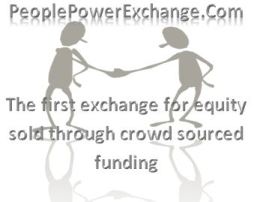Crowd Funding Information And Facts
Did you know that in the developing world alone, by 2025, there could be up to $93 billion in funds available annually for crowdfunding investments?
Or that from an income perspective, 240-344 million developing country households could participate in crowdfunding?
Or that crowdfunding gives the developing world the potential to leapfrog developed countries?
Startling statistics for most to hear, but these facts were provided by the World Bank. Figures from such a respected body clearly illustrate the sheer scale of the potential impact of crowdfunding.
Highlights of the World Bank Crowdfunding Report:
Crowdfunding has emerged as a multi-billion dollar global industry.
Between 2009 and 2012 crowdfunding expanded at a 63% annual compounded rate and shows no signs of slowing down.
Crowdfunding gives the developing world the potential to leapfrog developed countries.
By leveraging technology, crowdfunding can serve as an enabling mechanism for new venture formation, job creation, and inclusive economic growth.
The single most predictive factor for the rate of crowdfund emergence is social media penetration.
Out of 43,193 different projects funded on Kickstarter, there have only been 4 reported cases of possible fraud – a tiny rate of just 0.01%.
The potential is staggering and it’s a new frontier!
Crowdfunding sites like Kickstarter and Indiegogo are letting designers and other creative people connect with audiences who want to finance their dreams, and they are becoming increasingly popular. Nearly three million people have helped a total of 54,700 projects meet their fund-raising goals on Kickstarter, the largest such site, to the tune of nearly One billion USD in pledges and over one million six hundred thousand repeat users.
In addition to raising funds, entrepreneurs use crowdfunding for proof of concept, early validation of their idea, or for receiving pre orders from potential customers.
In April of 2012 the Jobs Act was passed by congress and signed into law by President Obama. The Act paved the way for Crowd Sourced Funding and legalized the use of web portals to raise investor capital.
Removing the restriction on general solicitation and issue amount has meant that crowd funding websites can post advertisements for companies offering equity for cash from individuals who qualify as accredited investors, generally a term used for people with a net worth in excess of one million dollars and or annual income over $200,000.00 for an individual or $300,000.00 for a married couple.
The Act also allows non-accredited investors the opportunity to invest through web portals, requiring the Securities and Exchange Commission (SEC) to create rules governing the industry.
In October of 2013 the SEC published a 585 page paper discussing Crowd Sourced Funding and proposed new rules to regulate the industry. Questions may be posed to the SEC until February 2014. Final rules are expected to be issued at some point in 2014.
The SEC proposed rules state that today it is estimated that there are 200 Crowd Sourced Funding platforms or portals on the American web and provided guidelines for discussion as to the regulation of these entities and future entities that may wish to enter the market place. To provide perspective on this data, Auction website grew in 2008 to 2013 by 119,000 new websites, with total gross revenue of $278 billion dollars in the USA in 2013.
The SEC has proposed that limits be placed on non-accredited investors who use these sites in order to protect those who would seek to make such an investment. They have also proposed the registration of web portals with the SEC and FINRA and are devising reporting requirements and restrictions on the manner under which these sites may operate. {The key proposals are listed below}
Initial suggestions to rules for website portals:
Provided a web portal gives no advice, does not handle investor funds and raises a sum of $1 million or less on any one entity, they would not be required to register as a broker dealer; instead they would need to register as a web portal with the SEC and FINRA. This does, however, indicate that a website may not preclude or pick users, as any attempt to ‘pick’ entrepreneurs who list on these sites could be construed as providing advice. Various reporting criteria are currently being ironed out. It is proposed that Investors using these services cannot invest more than 5% of either their net worth or income if their income is under $100,000.00 and 10% maximum if their income or net worth is in excess of $100,000.00. Portals will be required to adhere to anti-money laundering laws to provide specific disclosures, keep accurate records and exclude ‘bad actors’ from the use of crowd funding platforms.

